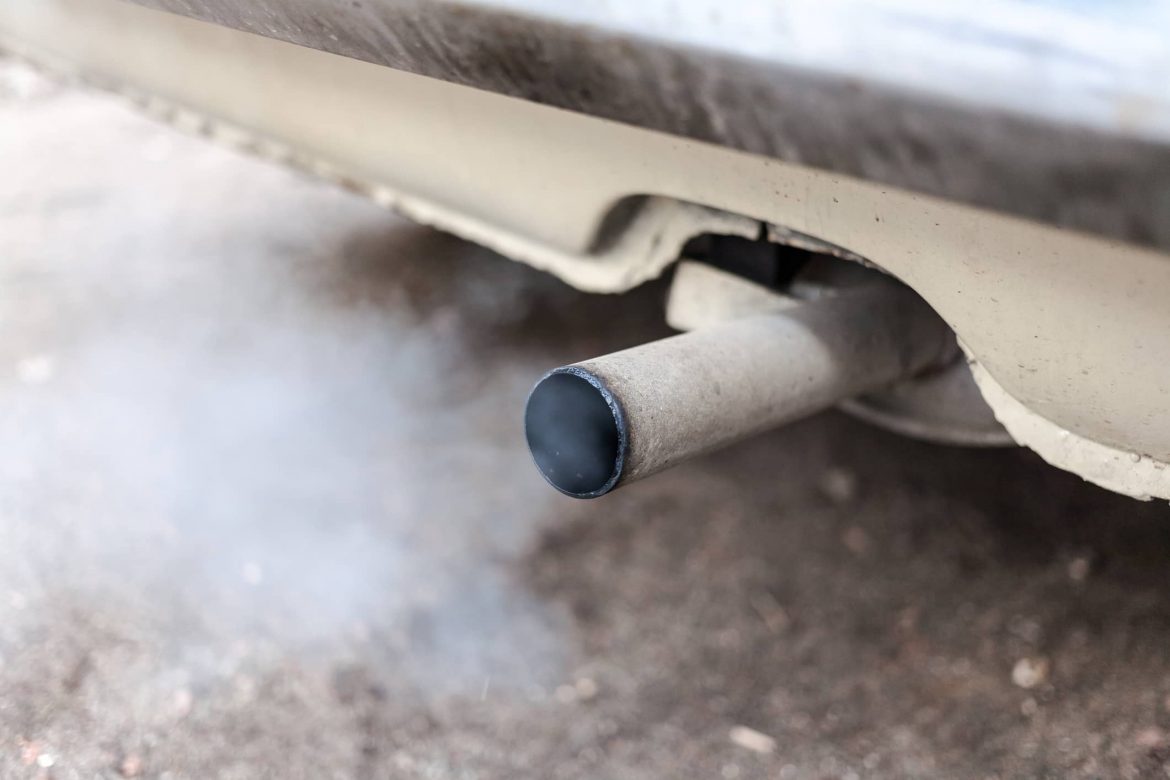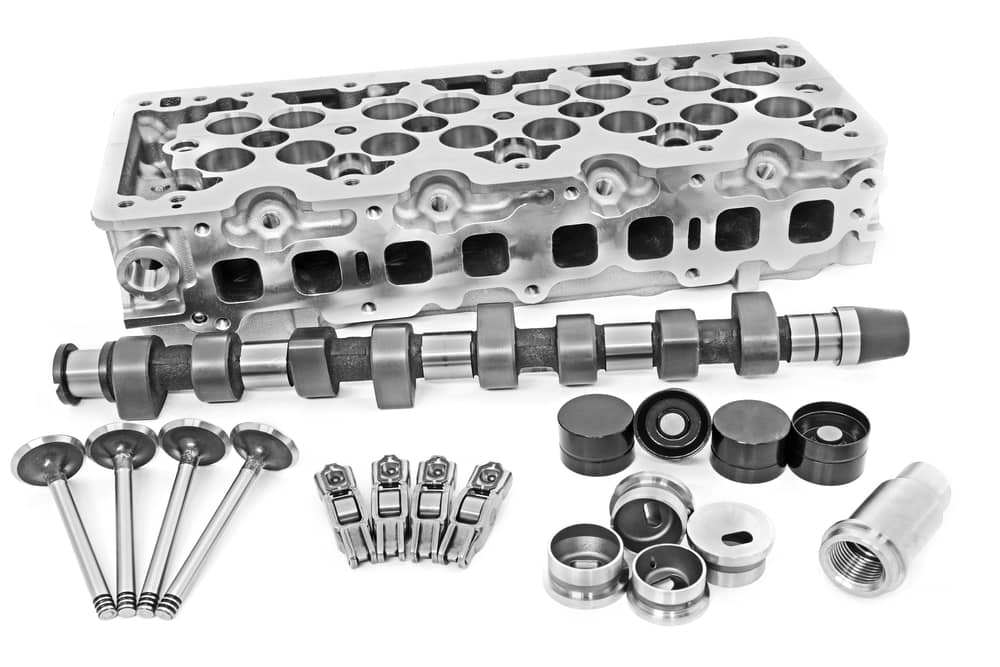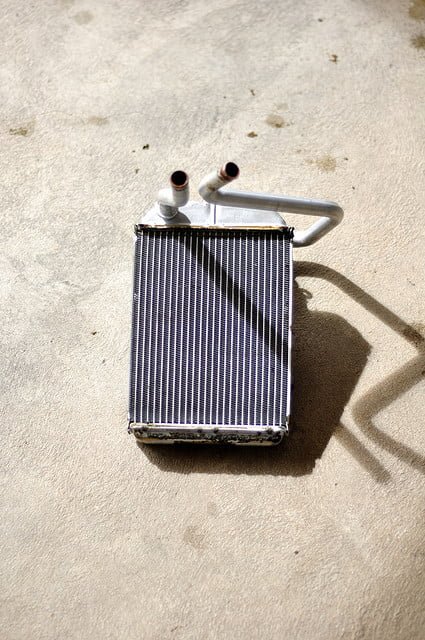Coolant is critical to your car. It keeps the engine from overheating and grinding to a halt. Consequently, when your car has a coolant leak, it should be a matter of immediate concern.
The cooling system includes numerous parts – the radiator, radiator fan, coolant hoses, water pump, coolant reservoir, and the coolant itself. Coolant is a half-and-half mixture of antifreeze and water, working together in combination. The water absorbs heat from the engine and gives it up in the radiator while the antifreeze prevents the water from freezing in the winter and boiling in the summer, and it keeps the radiator and hoses clear of deposits and corrosion.
How the Cooling System Works
This antifreeze-water mixture that we call coolant is pumped through hoses around the engine, absorbing its heat in the process. Even with coolant doing its job, engines run at an average temperature of 190-220 degrees Fahrenheit and can reach even higher temperatures under certain conditions.
As coolant is pumped to the radiator, a fan blows the heat out into the air, or into the passenger compartment when the heater is turned on. The coolant is then circulated back to the engine to begin the cycle again, a round-trip it makes thousands of times during the 50,000 miles of operation it will last in your car before a scheduled flushing.
Without a cooling system, temperatures would rise well beyond that, damaging the water pump, head gasket, cylinder, connector rods and more. In other words, without an operating cooling system, your car would fail.
In fact, most vehicles today include an automatic cutoff switch if the engine gets too hot. It won’t allow you to drive beyond a certain point, to prevent catastrophic damage to the engine. Fortunately, a dashboard warning light will indicate an overheating engine long before the switch is tripped, giving the operator plenty of time to address the issue.
Detecting a Coolant Leak
The most common problem leading to overheating is a coolant leak. When coolant leaks, there is less of it to cool the engine. That forces the water pump to work harder and allows heat to build up in the engine.
The first place to look for a coolant leak in your car is the coolant hoses. They are relatively easy and inexpensive to replace if you find coolant dripping out of one of them. The connection points between hoses and other elements like the radiator and water pump are another good place to look. The problem may be nothing more than a loose hose clamp.
Coolant may also seep from the radiator, the water pump, the coolant reservoir, and in the worst case, from a blown head gasket. Whatever the source of the leak, it must be found as soon as possible and repaired.
What Are the Warning Signs of a Coolant Leak?
There are four main ways leaking coolant can become apparent:
- You see the leak on the ground. Orange or green liquid dripping onto the ground beneath your vehicle is a clear sign that coolant is leaking. If you see this before any other symptoms appear, there’s a good chance you caught the problem early.
- The dashboard temperature gauge indicates increasing heat. The needle on the engine temperature gauge should remain in a fairly narrow range. If you see it creeping towards the red, that is an early sign of trouble in the cooling system.
- The dashboard warning light is illuminated. Warning lights are not as helpful as gauges because they don’t illuminate until there is already a problem. If the temperature icon lights up on the dashboard, the temperature is already too high.
- There is steam coming from the hood. Even before a radiator overheats and produces steam, heat from the engine can build up beneath the hood. Any water that falls on the hood, for example from rain or splashing, will sizzle and evaporate from the intense heat. That is a quirky, but early warning sign of overheating.
How to Prevent a Coolant Leak
All the fluids in a car should be checked periodically to ensure proper levels and topped off if low. Then they need to be monitored to determine whether the low level was the result of a larger problem. This is true of coolant as well as oil, brake fluid, power steering fluid, etc.
Most manufacturers advise the radiator be flushed every 50,000 miles or so. This cleans out the cooling system and provides a fresh batch of coolant to the system. Flushing the radiator is part of the preventative maintenance that can help avoid expensive repairs down the road.
Hoses and belts should also be inspected periodically for cracks, tears or weaknesses that might lead to breakage and leaks. While that is being done, hose connection sites should also be inspected for loose fittings and cracks.
This kind of preventative maintenance and inspection will identify problems before they become serious. Beyond that, most cooling system issues are simply a function of luck or time. Hoses crack, connections weaken, water pumps malfunction and head gaskets wear over time. The key is to address the issue when it arises.
Fixing a Coolant Leak
Coolant leak on the engine can be repaired in several ways, depending on the source of the leak. A broken radiator cap – the simplest and least expensive issue – can be repaired for 10 or 15 bucks by anyone, regardless of automotive expertise or lack thereof. Hose connections can be fixed by replacing the hose clamp, hose or both. Cracked hoses can be replaced if they are the culprit. Automotive DIYers can handle these issues themselves once they have identified the source of the leak, but for a lot of us it requires a trip to a car care professional.
Coolant today contains anti-corrosive agents to protect the radiator from rusting; nonetheless, radiators can develop leaks over time. The telltale sign of a leaking radiator is the puddle of orange or green liquid under the car, as mentioned above. This also likely requires the help of a service station to repair or replace.
If the expense of a trip to the service station is unaffordable and the leak is small, a quick way to stop it is by using a chemical sealant, like BlueDevil Coolant Stop Leak. The specially formulated additive seals leaks in metal, aluminum, cast, alloy, or plastic, eliminating the further loss of coolant from the system.
Using these products only requires the vehicle not be driven for a couple of hours. Once a bottle of the sealant is added to the radiator, the vehicle idles for 45 minutes to circulate the product. Another hour is needed so that the engine is allowed to cool before driving. Any leaks should be sealed at that point. If coolant continues to leak, the problem is elsewhere and the car should be brought to a professional.
Fixing Bigger Problems Than Leaking Radiator Hoses
A busted water pump or damaged heater core can also cause coolant leaks and must be repaired or replaced immediately to avoid disaster. Diagnosing these issues and fixing them requires a certain level of expertise. If you’re not an advanced DIYer, take the vehicle to a professional mechanic.
If the coolant appears to have a thin white film in the overflow reservoir or radiator, your motor oil is frothing with coolant, or you find coolant leaking on the engine block, that is a bad sign.
These are all symptoms of a blown head gasket, the thin metal piece that separates the combustion chamber from the rest of the engine, keeping heat and pressure in one place, and coolant and oil in their places. A blown head gasket is death on a cooling system, but it is much more than that. It threatens nearly every function of an automobile and must be repaired.
Replacing a head gasket would be relatively easy and inexpensive if it was located in a more accessible location. The problem is the head gasket hides way in the back of the engine on top of the cylinder head. Accessing it requires taking apart much of the engine, a process that can take all day. Labor costs for replacing a head gasket can easily run $1,000.
Unfortunately, a damaged head gasket is not something you can put off. The head gasket is vital to the functioning of an internal combustion engine. Neglecting a leaking gasket can literally destroy your car. If the hard part repair isn’t an option, a sealant product can save the day. BlueDevil Pour-N-Go Head Gasket Sealer can seal leaks in blown head gaskets, warped or cracked heads, heater cores, and freeze plugs permanently, and it comes with a money-back guarantee.
Whatever the source of your coolant leak, the one thing you can’t do is nothing. Take care of the cooling system and it will take care of the engine and keep the vehicle running for years.
BlueDevil Products can be found at AutoZone, Advance Auto Parts, O’Reilly Auto Parts, NAPA, Parts Authority, Auto Value, Bumper to Bumper and other major auto parts retailers.
BlueDevil Products can be found on Amazon.com or at AutoZone, Advance Auto Parts, O’Reilly Auto Parts, NAPA, and other major auto parts retailers.
16 responses to "Locating and Fixing a Coolant Leak"
16 Comments
Leave a Reply
Related Articles




i put coolant in the morning around 815am…after driving most the day about 4pm all the coolant was on the floor. i do not see any visible leaks. my car is not overheating the gauge jumps from normal to its highest point. it does not ride rough it does not smell. what could be the problem
Frank-
Are you saying coolant is on the floorboard of the car or is it leaking to the ground? Please contact our technical support line at 888-863-0426 so that we can get a little better understanding of the vehicle’s condition and be able to make any appropriate recommendations.
Thank you!
-BDP
No evidence of coolant anywhere. None whatsoever. Every 50 to 75 miles coolant reservoir empty. Discovered this when temperature Guage 🌡 needle started rising. Definitely a leak somewhere. But not evident…… Comprehension okay, hoses ok, going to try your sealant. Wish me luck people.
Steven-
Have you noticed any other symptoms, such as water/coolant mixing with the engine oil or smoke/steam coming out of the exhaust pipe? Please contact our technical support line at 888-863-0426 so that we can get a little better understanding of the vehicle’s condition and be able to make any appropriate recommendations.
Thank you!
-BDP
Hi I noticed coolant coming out upper right side there’s some kind of hoses behind the drivers light in a 2004 Jeep Liberty so I replaced it with another radiator same thing happening. I just don’t know what to do now.
Teresa-
Thank you for asking about your Jeep Liberty. Is the vehicle overheating at all? Please contact our technical support line at 888-863-0426 so that we can get a little better understanding of the vehicle’s condition and be able to make any appropriate recommendations.
Thank you!
-BDP
I feel my reservoir with antifreeze and it’s leaking out
Margaret-
How quickly are you losing antifreeze? Please contact our technical support line at 888-863-0426 so that we can get a little better understanding of the vehicle’s condition and be able to make any appropriate recommendations.
Thank you!
-BDP
Will this product stop a freeze plug leak?
I hope so!!!!! 🤞🏻🤞🏻🤞🏻🤞🏻🙏🏻🙏🏻🙏🏻🙏🏻
Randy-
Yes, the BlueDevil Head Gasket Sealer would be able to treat leaking freeze plugs.
Thank you!
-BDP
I have a 2001 jeep Cherokee. When I pour water in my radiator it comes straight out the oil pan with the plug removed.how do I use your product for this . It only holds about a gallon and a half of water before it goes directly in the oil pan.
Mark-
Thank you for asking about your Jeep Cherokee. The BlueDevil Head Gasket Sealer is intended for leaks that are seeping or lightly dripping. Unfortunately, the leak you’ve described is too large for the product to seal. Replacing the head gasket may be your best option.
Thank you!
-BDP
What is the difference between “Radiator and Block Sealer” vs “Coolant Stop Leak”
Dean-
The BlueDevil Radiator & Block Sealer is specifically formulated to treat leaks coming from the radiator and/or the block, external seeping or light dripping of coolant to the ground. Do you happen to know where your leak is coming from? Feel free to contact our technical support line at 888-863-0426 to discuss your vehicle in more detail.
Thank you!
-BDP
My Audi q7 coolant is leaking as soon as I put it in and I don’t know what to do
MP-
Are you able to see where the coolant leak is coming from? If you are losing coolant just as quickly as you add it, the problem may be with a loose hose connection or there’s a pinhole on the hose itself. If you are unable to identify the source of the leak, it would be best to bring the vehicle in for inspection and have the problem remedied.
Thank you!
-BDP